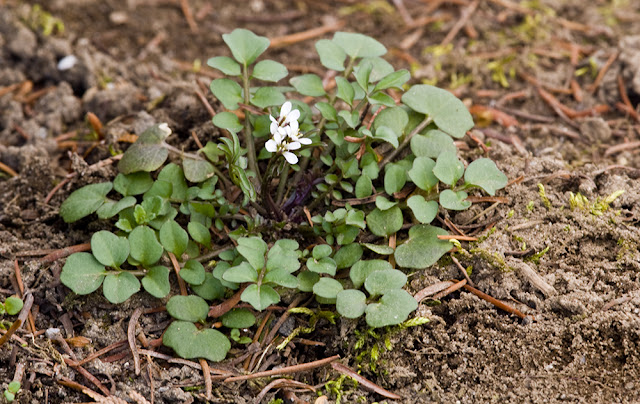Spring is a great time to get out and forage for greens and sprouts, but a lean time for most mushrooms. Only a few edible fungi dare to show up in our area of southern New England; the hunting doesn't get *really* exciting until July or so. While we are grateful to finally get outside and for the snow to be gone, we do still cast our eyes downwards in the eternal search for dinner.
The springtime mushroom most people know and are desperately hunting for is the morel, one of the Morchella species. We mostly find the larger yellows, Morchella americana, sometimes the smaller Morchella diminutiva that are associated with tulip trees, and we have personally never found any of the earlier black morels. It is important to distinguish true morels from false morels--true morels will be completely hollow when sliced in half, while false morels will have many convoluted chambers in the top and stem. False morels do contain a fatal toxin that accumulate in your body over time if you do not remove it with thorough cooking, and we just have better things to do than chance our lives to things like that rather than argue with folks who insist they have been eating them their whole lives with no problems. True morels also need to be cooked well to prevent stomach upset, and they dry well to concentrate their flavor for use later. They pair well with a a splash of marsala or white wine, a touch of salt, allow the excess liquid in the mushrooms to cook off, and add a knob of butter at the end. (there shouldn't be bugs, and if there are specks of dirt, brush them off or spray them with the hose on your sink, never soak your mushrooms in salt water!!).
 |
| Cornmeal and ramps waffles with marsala and morel gravy |
 |
| Biscuits made with ramps greens and morel butter |
We just don't have as many morels here in New England as the lucky folks in the Midwest have, it is a fact. The soil, the trees, and the the climate is different. We also don't follow forest fires like they do in the Pacific Northwest or California, the species of morels are different. So what are we looking for? Our northeastern morels are often associated with elms, ash trees, tulip poplars, or apple trees. Many of our elms and ash trees are dying from diseases and insect infestations, so I don't know if the morels prefer the trees sick. Unfortunately, the old apple orchards were treated with fairly toxic pesticides until fairly recently and fungi are really good bio-accumulators, so morels found in old orchard may be high in toxic elements, so eaters beware. Or, like all life forms, they can grow wherever they want to, flaunting all rules and confounding all predictions anyone wants to make! Just get out in the woods and walk the miles! Morels are members of the ascomycota, meaning they have a different way of spreading their spores than most other fungi. The cap portion will be yellow or light brown, pitted or look like a honeycomb, and hollow when sliced in half, The stem will be light cream colored and hollow when sliced in half. Morels grow on the ground.
On to the second common edible wild mushroom of spring, sometimes thought of as inedible or as the consolation prize when your morel hunt doesn't go well--the pheasant back or the dryad's saddle, Cerioporus squamosus. A lot of people think of them as inedible because they are collecting them in the wrong stage, when they are far too large! If it has shelved out and you can see the pores easily, and it is difficult to run your knife through the edge, it is too late. The mushroom will be the consistency of shoe leather and taste fairly bad at this point and actually IS inedible. If you find the pheasant backs when they are in their "pig's nose" stage, the pores are almost too small to see and you knife should cut through like a hot knife through butter, they will be incredibly tender. The flavor is very light and almost sweet and meaty at the same time, and it can stand up to any strong flavor you choose to throw at it. At this tender stage, you can cut the mushroom into any shape; slices, strips, cubes, grind it, then cook it several ways and season it several ways to utilize it as a meat substitute in any dish--very versatile!
 |
| Breaded and deep fried with some yellow tomato sauce |
Pheasant backs are polypores, so they have many pores on their undersides. The tops of the caps look like the wings of a pheasant, I suppose, with slightly hairy tufts. They are saprobic, growing on dying or dead trees, and in our area, seem to love maples especially. The fruiting bodies will often hang around on the trees all year, getting tougher, and sometimes some newer growth will show up again as the weather cools back down in the fall. In older guide books, they are listed as Polyporus squamosus.
 |
| "pigs nose" stage, perfect for collection |
 |
| finely chopped and cooked in a spicy sauce, then serve in Japanese temaki rolls |
 |
| sliced, sauteed with sweet potao noodles and flavored with gochujang sauce |















